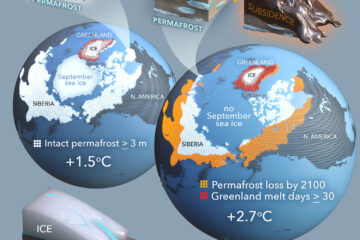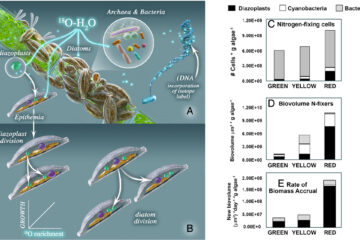Bruce HungateDirector, Regents' Professor of Ecosystem Science, and McAllister Chair in Community, Culture, and Environment

Research Interests
Hungate’s research focuses on the ecology and management of global change, and microbial ecology from humans to the globe. His research occurs in grasslands, woodlands, forests, and rivers. He uses experiments, models, and data syntheses to understand how ecosystems respond to global change.
He co-founded the Professional Science Masters’ degree program in Climate Science and Solutions at Northern Arizona University. He is an Aldo Leopold Leadership Fellow (2004), and a member of several honors societies: Phi Beta Kappa (1990), Sigma Xi (1999), and Phi Kappa Phi (2006).
Through teaching, research and outreach, Hungate hopes to raise awareness of the role of earth system science for managing global environmental change.
Lab Website
Full Curriculum Vitae
Selected Publications
Hungate BA, Mau RL, Schwartz E, Caporaso JG, Dijkstra P, van Gestel N, Koch BJ, Liu CM, McHugh TA, Marks JC, Morrissey E, Price LB, 2015. Quantitative Microbial Ecology Through Stable Isotope Probing. Applied and Environmental Microbiology 10.1128/AEM.02280-15
Hungate BA, Barbier EB, Ando AW, Marks SP, Reich PB, van Gestel N, Tilman D, Knops J, Hooper DU, Butterfield B, Cardinale BJ, 2017. The economic value of grassland species for carbon storage. Science Advances Vol. 3, no. 4, e1601880
DOI: 10.1126/sciadv.160188z
Koch BJ, Hungate BA, Price LB, 2017. Food-animal production and the ecology of antibiotic resistance. Frontiers in Ecology and Environment DOI: 10.1002/fee.
Rubin RL, van Groenigen KJ, Hungate BA, 2017. Plant growth promoting rhizobacteria are more effective under water stress: a meta-analysis. Plant and Soil DOI: 10.1007/s11104-017-3199-8
Terrer C, Vica S, Hungate BA, Phillips RP, Prentice IC, 2016. Mycorrhizal Association as a Primary Control of the CO2 Fertilization Effect. Science 353 (6294), 72-74




